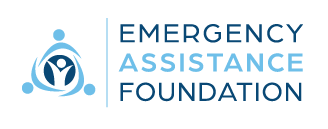
How Does a Severe Winter Affect Relief Funds?
January 13, 2016
Emergency Assistance Program Establishment and Grant Approval Percentages
May 18, 2016Is your organization able to help your employees in times of crisis or hardship? Chances are, your company has detailed business continuity plans to keep the business operational in the event of an emergency, but—are you also thinking about how to help your employees? Natural disasters, house fires, serious illness or spousal job loss can adversely impact your employees.
SVCF has entered into a preferred referral relationship with Emergency Assistance Foundation (EAF) to help companies address this gap. EAF is the only employee disaster hardship and relief charity that provides a global solution, has thoroughly researched this complex field and audited other programs. EAF is an expert in fund management, legal compliance and IRS requirements.
Employee relief funds (ERFs) allow companies to provide immediate charitable support to employees and their dependents who are facing financial difficulties because of personal hardship or disaster. However, these programs can be complex to design and manage—especially if they are administered directly by the company. Here are important considerations when establishing an employee relief fund:
• Expertise: does your organization have the experience to set up and run an ERF? The learning curve can be steep, and if you are reacting to a recent disaster, the delays can adversely affect your employees.
• Risk Management: By partnering with an external provider, your company diminishes its inherent risks, as a charitable third-party fund is viewed by regulatory and tax agencies as more independent than a company-managed private foundation. Issues like defining “charitable class” are more easily resolved when working with an experienced third-party administrator.
• Tax Efficiency: An improperly managed ERF can have adverse tax consequences for an employer and its employees. This is especially significant for multinational programs operating outside the U.S. due to differing tax entities and regulations.
• Global Programs: Do you have employees located around the world and need a compliant global solution in native language and currencies? Including all employees from inception demonstrates a globally inclusive culture.
• Application System: Can you provide a 24-7 dynamic, cloud-based online application system that supports language, currency and documentation requirements?
• Benchmarks: Do you know the industry benchmarks to monitor and evaluate your ERF program’s metrics for optimization?
• Costs: If your fund is not tax optimized, you could end up paying twice as much due to tax obligations. Partnering with a third-party charity can hold expenses down, while providing employees with tax-free grants (grantees) and charitable tax receipts (donors).
• Human Resources: ERFs are seen as an employee benefit and can help in your employee recruiting and retention goals by visibly demonstrating that your company cares about the wellbeing of its employees.
• Employee Privacy and Trust: Experience shows that employees can be reluctant to reveal to their employer that they are experiencing financial hardship. These types of applications often necessitate sharing personal family and medical information and working with an independent expert can help put employees’ minds at ease.
• Advance Planning: Setting up a fund in advance of a disaster or hardship gives you the ability to provide a thoughtful, comprehensive solution versus struggling to implement a program ‘on-the-fly’.
By their very definition, emergencies can happen at any time. And preparing for the unexpected can make the difference between catastrophic consequences and the ability to help your employees move forward through the hardship.
For more information on establishing an ERF, for help optimizing your existing program, or to connect with EAF, please contact donate@siliconvalleycf.org.
Click here for the original post: Silicon Valley Community Fundation





